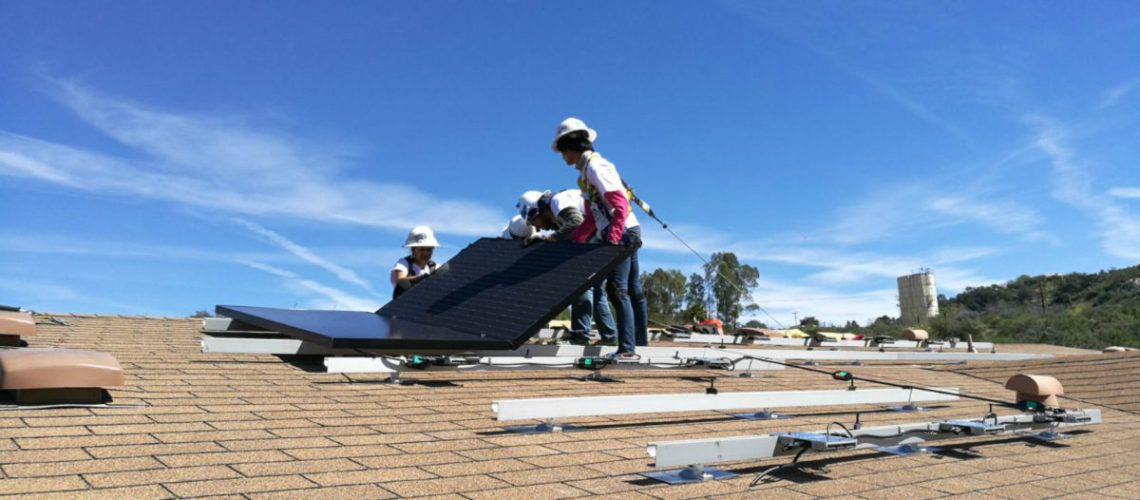A vote is expected mid-December on a rulemaking change that would severely dampen the value of new rooftop residential solar installations in the nation’s largest market.
The California Public Utilities Commission (CPUC) is expected to vote on the proposed Net Energy Metering (NEM) 3.0 in mid-December. The proposed decision changes the structure of net metering, and also lowers export rates by as much as 76%, a change that has been heavily criticized by the solar industry.
Net metering is a process by which utility companies pay rooftop solar owners for exporting electricity back to the grid. The solar array produces extra electricity during the day and in sunnier times of the year, so that a credit carries on the utility bill to cover the times when solar production is not covering electricity usage. Net metering helps rooftop solar owners get a return on their investment, and the excess energy sent by the system helps utilities balance the grid and meet demand.
Currently, average net metering rates range from $0.23 per kWh to $0.35 per kWh, and the new proposed decision cuts those rates to an average of $0.05 per kWh to $0.08 per kWh. This is set to be the largest drop in export rates in U.S. history, in a market that represents roughly 50% of the nation’s residential solar market.
Current NEM 1.0 and 2.0 customers are grandfathered in to their rates for 20 years, as are those who receive grid interconnection approval from the utility before 3.0 is enacted, should it go through in the vote. If enacted, the final date by which interconnection approval would be needed to attain NEM 2.0 rates would be April 15, 2023.
“If passed as is, the CPUC’s proposal would protect utility monopolies and boost their profits, while making solar less affordable and delaying the goal of 100 percent clean energy,” said Bernadette Del Chiaro, executive director of the California Solar and Storage Association (CALSSA).
There are several case studies across the nation that have shown solar adoption falls sharply following such a rulemaking decision. In California, the Imperial Irrigation District abandoned net metering in July 2016, causing residential solar installations to decline 88%. Also in 2016, Nevada made a cut to net metering compensation resulted in a 47% reduction in residential solar installations over the next year, said CALSSA. This led to a 2017 legislative session that restored net metering, which led to an increase in solar adoption.
“At a time when California needs rooftop solar to flourish, it’s risky to cut a key incentive without having a viable alternative in place. California’s decision-makers need to make rooftop solar as affordable and accessible as possible so that every household with solar potential can realistically make the choice to go solar,” said Laura Deehan, state director, Environment California.
The CPUC found that California must triple the amount of local, distributed solar to reach the clean energy mandate laid out by the state’s Senate Bill 100. CALSSA said rooftop solar will save California ratepayers $120 billion by 2050, or $300 per person per year.
Abigal Ross Hopper, president and CEO of the Solar Energy Industries Association (SEIA), said that the decision should be altered to “ensure a more gradual transition to net billing.”
With upcoming CPUC vote, there is still time to voice opinion on the rulemaking procedure. Visit savecaliforniasolar.org to learn more.




